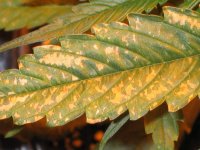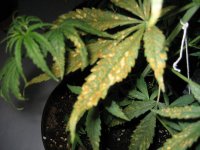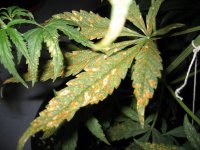VirginHydro
New member
Ok everyone, i have my plants growing in 5 gallon buckets, a few of them have shown signs of whats looks like a lack of Calcium due to low PH ( Pic is of 1 plant ) Locked up? I have since added Epsoma Garden lime " Fine Pelletized " ( 2 TBS each time sprinkled over the peat,over the last 2 waterings. I run tap water ( well water ) and use it for water ( PPM 120 ), Ph of the tap water is 7.3, after watering i check the Ph of the runoff, and my babies all come in around 5.8-6.0. What can i easily do to unlock the calcium and solve my Ph problem? I do have GH Ph up & Ph Down.
Thank you,
Thank you,





